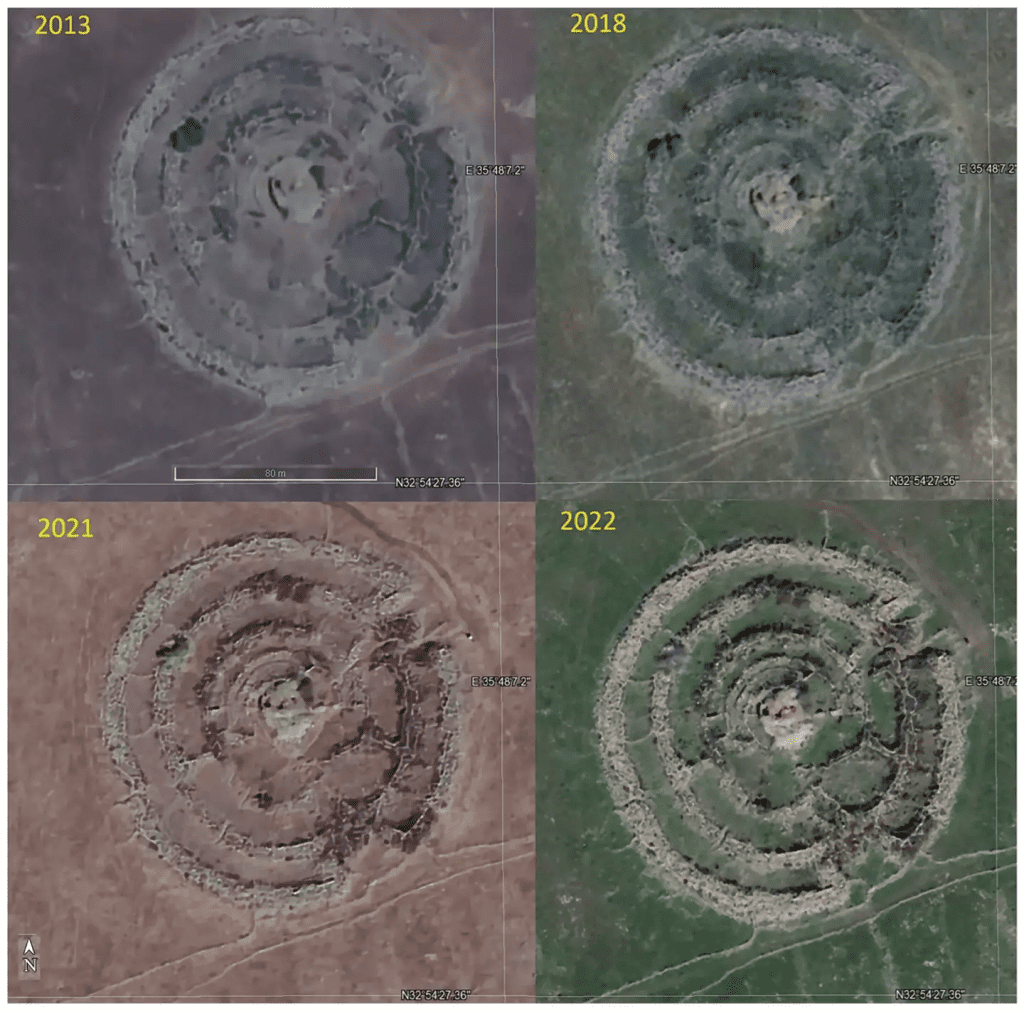
Known as Rujm el-Hiri, this site is often referred to as the “Stonehenge of the East” due to its similarities to the famous Stonehenge in England. Rujm el-Hiri is a megalithic structure, a term used for prehistoric constructions made from large stones. These types of structures are found all over Europe, with about 35,000 examples across the continent.
However, Rujm el-Hiri is not located in Europe but in the Golan Heights region of Syria.
What is Rujm el-Hiri?
Situated about 16 kilometers inland from the Sea of Galilee, Rujm el-Hiri consists of more than 42,000 stones arranged in concentric circles. At the center of the monument is a large stone mound, which reaches a height of about 15 feet (4.6 meters) at its tallest point.
Despite its impressive scale and complexity, the exact purpose of Rujm el-Hiri remains unclear. The name “Rujm el-Hiri” translates to “stone heap of the wildcat,” while the modern name “Gilgal Refaʾim” means “Wheel of Ghosts” or “Wheel of Spirits.” The structure is made up of nearly 40,000 tons of stone, and it is estimated that it took more than 25,000 combined working days to complete.

Theories About Rujm el-Hiri
First discovered in 1967 during an archaeological survey, Rujm el-Hiri was only excavated in 2007. While early studies ruled out the idea of it being a burial site, as no human remains have been found, some researchers speculated that it might have astronomical significance. Others believed it could be linked to ancient rituals or offerings to gods.
New Discoveries at Rujm el-Hiri
In a recent study published in the journal Remote Sensing, scientists from Tel Aviv University and Ben-Gurion University of the Negev analyzed new satellite images of Rujm el-Hiri. These findings cast doubt on the theory that the monument was an astronomical observatory.
The study revealed that Rujm el-Hiri has physically shifted over time due to the movement of Earth’s tectonic plates. The tectonic shifts have caused the structure to move in a counterclockwise direction, altering its walls and entrances. Over the last 150 million years, the site has shifted tens of meters, with movements occurring at a rate of 8 to 15 millimeters per year.

“The findings show that the entrances and radial walls during that historical period were entirely different, reopening the question of the site’s purpose,” said the research team. “This implies that the primary axes of Rujm el-Hiri have rotated over time along with the entire region, casting significant doubt on the popular theory that Rujm el-Hiri was an observatory.”
The outer walls of Rujm el-Hiri are believed to have been built between 5,000 and 4,500 BC.



